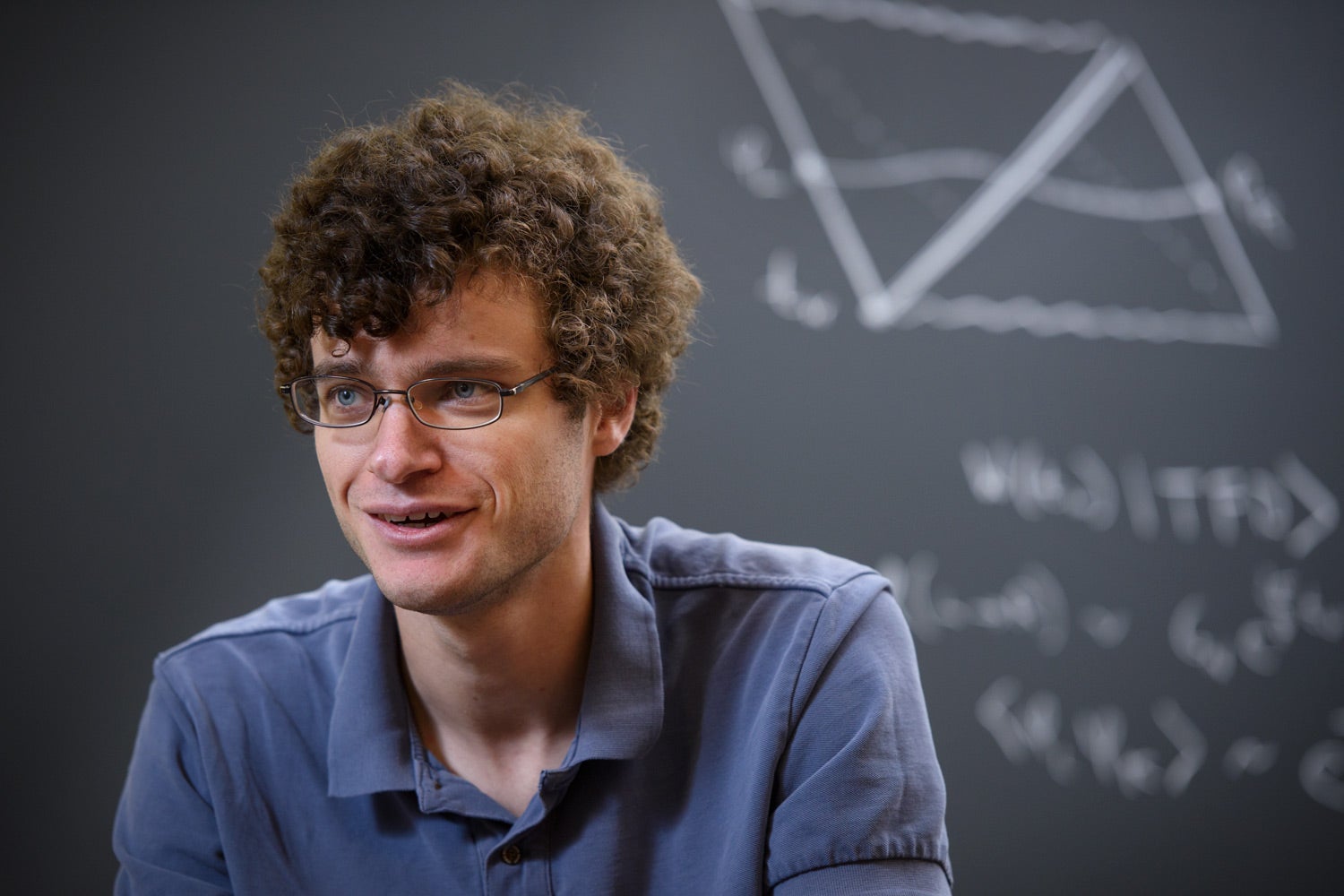Douglas Stanford, an assistant professor of physics, has won a 2018 Breakthrough New Horizons Prize in Physics for work that uses chaos to better understand the links between quantum physics and black holes.

Breakthrough New Horizons Prize winner Douglas Stanford uses chaos to study the links between black holes and quantum physics. (Image credit: L.A. Cicero)
The prize is given each year to up to three “promising junior researchers who have already produced important work,” according to the prize website. Each winner is awarded $100,000, funded by a grant from the Milner Foundation.
Stanford said he learned of the prize after Edward Witten, a member of the Breakthrough Prize selection committee with whom Stanford is collaborating, emailed on a Friday afternoon and asked Stanford to call him.
“I was worried he discovered some problem in our paper,” Stanford said. Instead, he got good news.
“I think this will be most valuable to me as an encouragement,” said Stanford, who is currently on leave at the Institute for Advanced Study in Princeton, New Jersey. He said theoretical physics is an abstract pursuit, and it can feel disconnected from society at large. “It’s nice to feel it’s appreciated and connected in some way,” Stanford said. “I think that’s very meaningful.”
As for the prize money: “I might buy a couple new soccer goals” for the Institute for Advanced Study’s soccer teams, he said. “There’s a lawn mower that keeps running them over.”
Black holes and quantum chaos
Stanford’s research deals with one of the most fundamental and important questions in theoretical physics: how to formulate a quantum theory of gravity, thereby reconciling the physics of black holes – nature’s densest objects, governed by Einstein’s theory of gravity – with quantum mechanics, the cornerstone theory of modern physics that explains just about everything there is to know about matter. Everything, that is, except black holes and gravity.
Surprisingly, one lens through which to study the connection between black holes and quantum mechanics is another, seemingly unrelated pillar of modern physics: chaos. In a chaotic system, small changes in initial conditions lead to big changes down the road, an idea illustrated by the so-called butterfly effect, where a butterfly flapping its wings in one place can cause a tornado days or weeks later in another.
In collaboration with Juan Maldacena and Stanford University physicist Stephen Shenker, the Richard Herschel Weiland Professor in the School of Humanities and Sciences, Stanford used a mathematical connection between quantum physics and gravity to show that black holes are the most strongly chaotic systems possible in our universe. Subsequent work suggested that black holes’ penchant for chaos may help explain a decades-old mystery, known as the information paradox, about what happens to objects when they fall into a black hole.
Stanford’s discoveries also led him to study the physics of wormholes, objects through which a person could teleport from one place in the universe to another. Physicists had long believed that traversable wormholes, while interesting from a theoretical point of view, could not actually exist in nature. Just this year, however, theorists showed that quantum aspects of black hole physics could make traversing a wormhole possible, an idea Stanford said could yield further insights into the black hole information paradox.
Stanford breakthroughs
Stanford has a long-standing connection with Stanford University. He began his career in physics as an undergraduate at the university and stayed on for doctoral studies working with Leonard Susskind, the Felix Bloch Professor in Physics and the Wells Family Director of the Stanford Institute for Theoretical Physics. He earned his PhD in 2014 and left Stanford for the Institute for Advanced Study, but returned as an assistant professor of physics earlier this year.
New Horizons prizes are one of three groups of Breakthrough Prizes in physics – the others are the $3 million Special Breakthrough Prize and the $3 million Breakthrough Prize. The Breakthrough Prizes also recognize researchers in mathematics and life sciences.
Past Stanford University winners include Karl Deisseroth, the D.H. Chen Professor, professor of bioengineering and of psychiatry and behavioral sciences, who won the 2016 Breakthrough Prize in Life Sciences; Roeland Nusse, the Virginia and Daniel K. Ludwig Professor in Cancer Research and a professor of developmental biology, who won the 2017 Breakthrough Prize in Life Sciences; Xiaoliang Qi and Leonardo Senatore, associate professors of physics, who each won a 2016 New Horizons Prize; and Peter Graham, an associate professor of physics, who won a 2017 New Horizons Prize.
Also, Associate Professor of Physics Sean Hartnoll was a New Horizons in Fundamental Physics winner in 2015, Shoucheng Zhang, the J. G. Jackson and C. J. Wood Professor of Physics, was a Physics Frontiers winner in 2013 and Andrei Linde, the Harald Trap Friis Professor, was in the inaugural class of laureates in 2012.
Media Contacts
Nathan Collins, Stanford News Service: (650) 725-9364, nac@stanford.edu